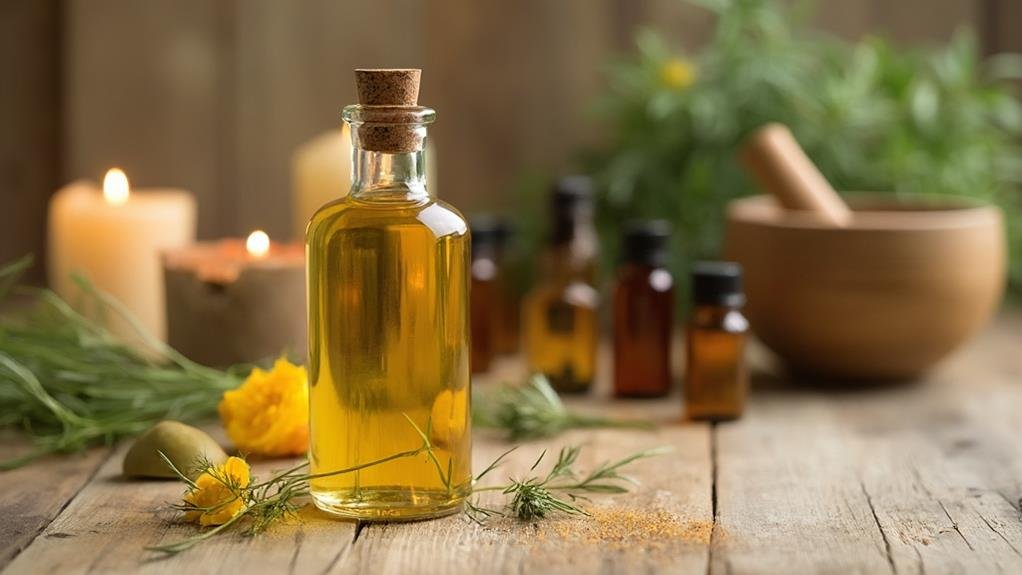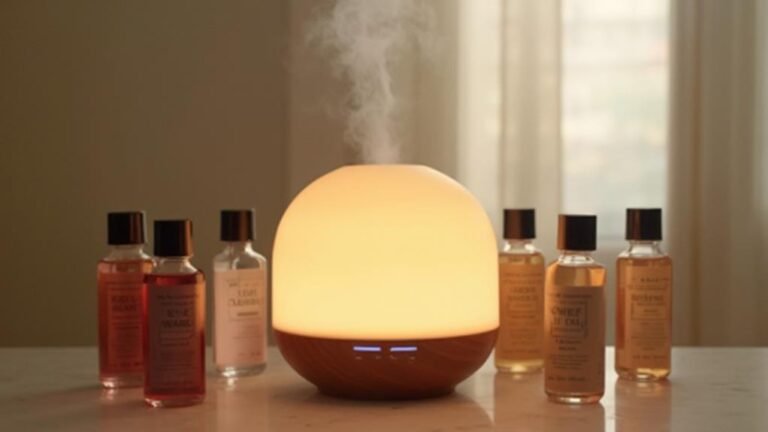Can I Mix Essential Oils With Vitamin E Oil?
Yes, you can mix essential oils with vitamin E oil. This combination can offer enhanced benefits for skin and hair care when done with caution and proper dilution.
Vitamin E oil acts as a carrier oil, diluting the potent essential oils and helping to nourish and protect the skin.
Benefits of Mixing Essential Oils with Vitamin E Oil
Combining essential oils with vitamin E oil can create a powerful synergy, offering a range of benefits:
- Enhanced Skin Hydration and Nourishment: Vitamin E oil is a well-known moisturizer that helps to hydrate and nourish the skin. When combined with essential oils, it can further enhance these benefits, leaving your skin feeling soft, supple, and healthy. Discover more about using olive oil as a carrier for essential oils, another popular choice for nourishment.
- Improved Skin Elasticity and Reduction of Wrinkles: Vitamin E oil is rich in antioxidants, which help to protect the skin from damage caused by free radicals. This can help to improve skin elasticity and reduce the appearance of fine lines and wrinkles.
- Antioxidant Protection Against Free Radical Damage: Both essential oils and vitamin E oil possess antioxidant properties. When combined, they create a potent blend that helps to protect the skin from environmental stressors and premature aging.
- Potential Synergistic Effects for Treating Skin Issues: Certain essential oils, like tea tree oil for acne or lavender oil for inflammation, can have specific therapeutic benefits for the skin. Mixing them with vitamin E oil may enhance these effects and help to treat various skin concerns.
- Improved Penetration of Essential Oils into the Skin: Vitamin E oil can help to improve the absorption of essential oils into the skin, allowing them to penetrate deeper and deliver their therapeutic benefits more effectively.
Understanding Vitamin E Oil

Vitamin E oil comes in natural, synthetic, or blended forms. Natural vitamin E oil, derived from plant sources, is often considered more bioavailable.
When selecting vitamin E oil, opt for high-quality, sustainably sourced options and store it in a cool, dark place to maintain its potency.
Essential Oil Properties and Why They Matter When Mixing
Understanding the properties of essential oils is important when mixing them with vitamin E oil. Here are some key properties to consider:
- Volatility: This refers to how quickly the oil evaporates. More volatile oils might need to be blended with a thicker carrier oil, like vitamin E, to slow down evaporation.
- Viscosity: This is the oil’s thickness. Vitamin E oil has a thicker viscosity, which can help to dilute and carry lighter essential oils.
- Chemical Composition: The chemical makeup of an essential oil determines its therapeutic effects and potential for skin sensitivity. Always research the specific essential oil you want to use before mixing it with vitamin E oil.
- Has no adverse effects on materials: When planning to utilize essential oils in creative ways, it’s essential to ensure they don’t cause damage. For example, learn about essential oils and their potential to stain wood before using them in household applications.
Mixing Essential Oils with Vitamin E Oil: A Step-by-Step Guide
- Choose your essential oil: Select an essential oil based on your desired benefits and skin type.
- Select your vitamin E oil: Opt for a high-quality, natural vitamin E oil.
- Dilute properly: A common dilution ratio is 1-2 drops of essential oil per teaspoon of vitamin E oil. However, always start with a lower concentration and perform a patch test.
- Perform a patch test: Apply a small amount of the diluted blend to a small area of skin (like your inner arm) and wait 24 hours to check for any adverse reactions.
- Mix and apply: If no irritation occurs, mix your desired amount of essential oil and vitamin E oil in a clean container. Apply the blend to your skin or hair as needed.
Best Essential Oils to Mix with Vitamin E Oil

- Lavender Oil: For relaxation, skin soothing, and sleep promotion.
- Tea Tree Oil: For acne treatment, wound healing, and antiseptic properties.
- Frankincense Oil: For reducing inflammation, promoting skin regeneration, and emotional balance.
- Peppermint Oil: For invigorating the senses, relieving headaches, and promoting mental clarity.
- Rosemary Oil: For stimulating hair growth, improving circulation, and scalp health.
Enhancing the Benefits: Examples of Blends
- For Relaxation and Sleep: Mix 2 drops of lavender essential oil with 1 teaspoon of vitamin E oil. Apply to pulse points or add to a warm bath before bedtime.
- For Acne Treatment: Mix 1 drop of tea tree oil with 1 teaspoon of vitamin E oil. Apply to blemishes using a cotton swab.
- For Scar Reduction: Mix 1 drop of frankincense oil with 1 teaspoon of vitamin E oil. Massage gently into scars twice daily.
Safety Precautions
- Always dilute essential oils before use.
- Perform a patch test before applying to larger areas of skin.
- Avoid contact with eyes and mucous membranes.
- Consult a healthcare professional if you have any concerns or medical conditions.
- Keep essential oils out of reach of children and pets.
Storage Recommendations
Store your essential oil and vitamin E oil blends in a cool, dark place, preferably in dark-colored glass bottles to protect them from light and heat.
Conclusion
Mixing essential oils with vitamin E oil can be a wonderful way to enhance your skincare routine and enjoy the therapeutic benefits of both ingredients.
By following proper dilution guidelines, performing patch tests, and storing your blends correctly, you can safely and effectively utilize these powerful natural ingredients for a holistic approach to wellness.







